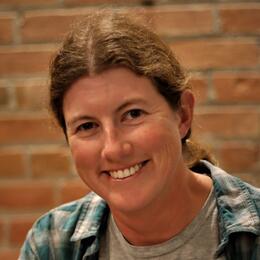Check out the latest post about our IBA of the month - Lea-Hutaff Island.
Although some winter species, like the Dunlin, that use Lea-Hutaff Island won’t be leaving for a month or two, some of the island’s summer breeders will start to arrive as early as the end of March. Piping and Wilson’s Plovers arrive in mid or late March, while Common and Least Terns arrive in North Carolina at the end of March and soon start to prospect for a nesting site. Black Skimmers arrive a little later, but they like to see where the terns have set up their colony and join them. The American Oystercatcher also nests on Lea-Hutaff, and like the plovers they are solitary nesters, defending a territory and excluding other birds from it.
To prepare the island for nesting birds Audubon staff and volunteers post strategic areas at the north and south ends of the islands. Terns and skimmers often favor the nesting areas that are adjacent to an inlet, where the baitfish they feed on are plentiful. However, oystercatchers and plovers may nest anywhere along the length of the island.
Last nesting season saw mixed success at Lea-Hutaff Island. There was not much suitable habitat for terns and skimmers, so only a handful attempted to nest on the island. The Least Terns, however, set up on a shoal in Rich Inlet and on the north end of Figure 8 Island. Unfortunately, storm tides overwashed many of their nests—one of the hazards of being a beach-nesting bird. Plovers and oystercatchers faced predation, but two oystercatcher chicks survived to fledge. As always, this year’s nesting success will depend on two main factors: the availability of quality habitat and low levels of disturbance. It takes periodic overwash events to create optimal nesting habitat, but we can also help limit disturbance by respecting posted areas and being sure not to leave any picnic food behind that would attract predators to the area.
You can help support Audubon's work at Lea-Hutaff. Give a bird one more day, help protect an IBA by supporting Audubon North Carolina.
-- Lindsay Addison




